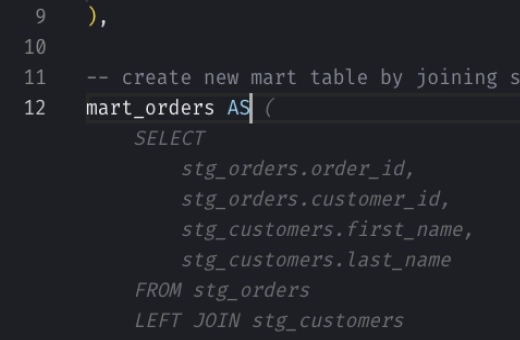Snowflake GROUP BY: Aggregate Data into Groups
The GROUP BY clause in SQL is used to aggregate records into groups that share the same values in specified columns. It’s useful when you want to perform calculations on subsets of data and is often paired with aggregate functions like SUM(), AVG(), COUNT(), etc.
Syntax
The basic syntax for GROUP BY is:
_10SELECT column1, column2, aggregate_function(column3)_10FROM table_10GROUP BY column1, column2;
You can also use expressions, column positions, or more complex conditions for grouping.
Extensions
- GROUP BY CUBE: Generates a result set that shows aggregates for all combinations of the specified columns. It’s useful for creating subtotals and grand totals.
- Use case: If you need to calculate the total, as well as subtotals for each dimension in a multidimensional dataset,
GROUP BY CUBEis the right choice. - Example: If you’re analyzing sales data grouped by both region and product,
GROUP BY CUBEwill provide aggregates for each region, each product, combinations of region and product, and a grand total across all regions and products.
- Use case: If you need to calculate the total, as well as subtotals for each dimension in a multidimensional dataset,
- GROUP BY ROLLUP:
GROUP BY ROLLUPis similar toGROUP BY CUBEbut less comprehensive. It creates a hierarchy of subtotals and rolls up data from the lowest level to the grand total.- Use Case: Use
GROUP BY ROLLUPwhen you need a hierarchical aggregation that moves from the most detailed up to a grand total. It’s more focused thanGROUP BY CUBEas it only rolls up the totals in one direction. - Example: For sales data grouped by year, month, and day,
GROUP BY ROLLUPwill give totals for each day, each month, each year, and the overall total.
- Use Case: Use
GROUP BY GROUPING SETS: This extension provides the most flexibility by allowing explicit definition of multiple groups of columns. You specify exactly which combinations of columns to use for aggregation.- Use Case:
GROUP BY GROUPING SETSis ideal when you need specific groupings of data and are not interested in all possible combinations. It’s more efficient than using multipleGROUP BYclauses. - Example: If you only want totals for region, product, and then region combined with product, you can specify this with
GROUP BY GROUPING SETS.
- Use Case:
Common Use Cases
- Calculating Totals: Summing sales by region, counting orders by customer, etc.
- Statistical Analysis: Average spending per user, maximum and minimum values.
- Data Quality Checks: Counting nulls or the distribution of values.
Examples
GROUP BY vs. GROUP BY ALL
Let’s assume you have a sales table and you want to calculate the total sales by both region and product category.
Input
Table: sales
| region | product_category | sales_amount |
|---|---|---|
| North | Electronics | 1200 |
| North | Electronics | 1500 |
| South | Electronics | 900 |
| North | Clothing | 700 |
| South | Clothing | 600 |
| South | Electronics | 1200 |
| North | Clothing | 300 |
| South | Clothing | 800 |
Snowflake SQL Query: GROUP BY
Using GROUP BY to calculate total sales by both region and product_category to find the total sales in each category for each region:
_10SELECT region, product_category, SUM(sales_amount) AS total_sales_10FROM sales_10GROUP BY region, product_category;
| region | product_category | sales_amount |
|---|---|---|
| North | Electronics | 2700 |
| South | Electronics | 2100 |
| North | Clothing | 1000 |
| South | Clothing | 1400 |
Snowflake SQL Query: GROUP BY ALL
When the SELECT statement includes all non-aggregate fields, GROUP BY ALL automatically includes them in the grouping:
_10SELECT region, product_category, SUM(sales_amount) AS total_sales_10FROM sales_10GROUP BY ALL;
| region | product_category | sales_amount |
|---|---|---|
| North | Electronics | 2700 |
| South | Electronics | 2100 |
| North | Clothing | 1000 |
| South | Clothing | 1400 |
